#Montezuma Valley
Explore tagged Tumblr posts
Video
Hiking Along the Knife Edge Trail with Only Amazing Views! (Mesa Verde National Park) by Mark Stevens Via Flickr: A setting looking to the southwest while taking in views and hiking the Knife Edge Trail in Mesa Verde National Park. The ridges off in the distance are coming off the main park area and road entrance, while this path follows the older park road entrance. My thought I\'m composing this image was to take advantage of the layers present, from near to far, while using the hiking trail as a leading line into the image. As a side note, I later came to realize the overlook point I’d visit next was on the other side of this bend at Montezuma Valley Overlook, following the old park entrance road.
#Ancestral Puebloan#Ancestral Puebloan Archaeological Sites#Archaeological Preserve#Archaeological Sites#Azimuth 206#Blue Skies#Blues Skies with Clouds#Clouds Wisps#Colorado Plateau#Day 5#DxO PhotoLab 7 Edited#Evergreen#Evergreen Trees#Hiking Trail#Intermountain West#Knife Edge Trail#Landscape#Landscape - Scenery#Looking SW#Mesa Verde National Park#Montezuma Valley#Mountain Peak#Mountains#Mountains in Distance#Mountains off in Distance#Mountainside#Nature#Nature Trail#New Mexico and Mesa Verde National Park#Nikon D850
4 notes
·
View notes
Text










Forest (No. 81)
Wolf Creek Valley - Overlook, CO (four pics)
Mesa Verde National Park, CO (six pics)
#Mesa Verde National Park#Montezuma County#San Juan Overlook#San Juan National Forest#San Juan Mountains#Archuleta County#Rocky Mountains#USA#travel#original photography#vacation#tourist attraction#landmark#landscape#countryside#mountains#summer 2022#forest#woods#flora#nature#blue sky#clouds#meadow#Colorado#Wolf Creek Valley - Overlook#volcanic formation#Left Fork of the San Juan River
9 notes
·
View notes
Text
Wandering Heart Adventures – Surprise, Arizona
Welcome to wandering heart adventures Featuring: Antelope Canyon Unique Sightseeing Arizona Day Trips Antelope Canyon/Horseshoe Bend Grand Canyon/Sedona and many more! Ask about private tours DAY TOUR PACKAGES: We offer six day trip packages of Northern Arizona and Southern Arizona. From Native American wonders of Tuzigoot and Montezuma Castle to red rock delights of the Sedona and the…

View On WordPress
#Antelope canyon tours#Apache trail tours#Arizona day tours#Arizona day trip tours#arizona gay friendly travel#arizona gay travel#Arizona sightseeing tours#Bisbee arizona tours#Customized tours of Arizona#gay arizona#gay travel blog#gay travel information#Grand Canyon tours#Jerome arizona tours#Montezuma castle tours#Monument valley tours#Northern Arizona tours#Sedona tours#Southern Arizona tours#Tombstone arizone tours#Wandering Heart Adventures#Wandering Heart Adventures Arizona
0 notes
Note
I know you've raised several breeds of quail by now- which one has been your favorite? I'm looking into adding one or two quail tractors to my farm to help manage the insect population in the horse pastures as well as roaming them supervised in the barn for the same purpose. (With a hutch in the tack room for the winter and nighttime). I'm just not sure what species to choose! I have quite a few available around me, including button, bobwhite, coturnix, and celadon coturnix.
my "favorite" doesn't really apply to use; my favorite are the bobwhites, but keeping them was a nightmare. In the peafowl pens, the peafowl just ate their eggs. In an indoor pen, they hid their eggs and I was forever finding hidden stashes that were ??? age. In hutches, they seemed miserable and more aggressive. After a lot more reading on research done about it, wild-release captive-born birds pretty much never survive to reproduce, so it was wasted money and time (for the quail, I'm sure the predators in the area didn't mind, nor the outdoor cats).
But for what you want, bobwhites and buttons are not going to really be feasible. Bobwhites you can't really "roam" them even indoors, because you will have a hell of a time catching them if you can even find them- those little shits can squeeze into pinholes you would not BELIEVE if they are trying to hide after landing from a flush, and they're excellent at flying. I let the WHITE snowflake bobwhite I had into the peafowl pen and immediately lost her when she buried herself in a small patch of longer grass along the barn wall within 3 seconds (I did find her eventually but man she was HIDDEN). Buttons are even worse/smaller, and they're not even cold hardy, so you'd have to actually heat them in the winter, not just keep them in a room protected from draft. You'd kind of run into the same problem with other new world quail like valley/gambel's, or blue scale, or montezuma or whatever. They're all still naturally flighty, survival game birds.
The coturnix really aren't that much better, but at least they suck at flying and aren't as flighty to begin with, but you're still likely to be chasing them around the barn to get them back, rather than them returning to a hutch to sleep. The problem with them is they're fairly lazy, and they don't raise their own kids ever (it's just been bred out of them), so you WILL have to buy more or an incubator if you want to replace them, and they are Meat birds and don't tend to live as long as new world quail. But, of all the quail, that would probably be your best bet if your heart is set on quail. They're ravenous, they're meaty and lay eggs daily year round, and they're pretty tame for a game bird. If you like blue eggs, then you can go with the celadons, but they're a lot more work for selection (and I don't mean selection toward standard, I mean selection so their eggs don't go to shit and start breaking/getting malformed due to the ce gene messing with some health stuff if you're not careful about avoiding it- definitely do research before getting them) and more finicky on nutrition, so you may find they don't do as well ranged on pasture as the standard egg layers do.
HOWEVER. If you have the ability to do it, and you're specifically looking for insect population control, you could always go with some bantam chickens instead of quail. Unlike quail that were never bred for it, chickens DO have a "home base" instinct, which means they're unlikely to disappear into the wild, and there's no native wild chicken populations (assuming you aren't in the jungle where chickens originated, but I could be wrong) escapees could interbreed with (unlike with quail, who CAN hybridize with native quail and Cause Problems) if they happened to leave. They can be turned loose into pastures and get all over the place to eat bugs without you having to move a tractor (but can also be tractored if you prefer to place them). And there are some VERY small breeds out there - seramas, OEG, sebrights, d'uccles/booted bantams, d'anvers, etc - and there are some breeds that come in bantam and standard that are still pretty small (silkies, polish, cochins, etc). AND the smaller breeds can have small coops to be roosts overnight, so their housing similarly doesn't need to take up a ton of space.
Alternately alternately, you could have a look at guinea fowl. They're a "game bird" like quail, but they're able to free range like chickens, but they don't necessarily need or even want a coop; they prefer to roost in trees on most farms I've seen. But they're well known for a) readily declining insect populations where they are, particularly ticks and b) being a home alarm system because they WILL scream about anything weird they see, but they're more accurate about it than, say, peafowl, whose definition of "weird" includes things that are very normal. but they're not as small as quail or bantam chickens, and I don't know what the likelihood of absconding is, so you'd have to talk to someone that keeps them- I'm just mentioning them in case you've never heard of them and want to look into it.
So, yeah, Coturnix (any variety) if you're set on quail and you want to let them out of a cage in any capacity that involves returning them to your care, but I'd honestly advise looking into bantam chickens if you're looking for insect control specifically since they have better ranging ability. Or guinea fowl if you find they're your thing.
80 notes
·
View notes
Text










Bonita Wa Wa Calachaw Nuñez (December 25, 1888 — May 12, 1972), was born on Christmas Day in 1888 in the Southern California desert, near the town of Valley Center. She was adopted by an unmarried, wealthy, Irish American woman named Mary Duggan, and she was raised by Mary and her brother, the prominent New York physician, Dr. Cornelius Duggan.
When Nuñez was older, Mary Duggan attempted to get her into Barnard College, but she was refused admittance due to her race. Nuñez later wrote about this rejection stating, "I have not forgotten I was denied the Right [sic] of a college education."
As an adult, and beginning around World War I, Nuñez became active in the Pan-Indian Movement and fought for the rights of Native Americans to join the armed forces. This fight led to her close friendship with the Apache scholar, Dr. Carlos Montezuma. After this, she fought tirelessly for the rights of Native Americans. She often received letters from Native Americans from all over the country, and she would respond with letters of her own as well as money from her welfare checks to help them.
After Mary's death, Nuñez became destitute, and in order to survive, she began selling an "Indian Liniment" made of "Secret Herbs" on the streets of New York City. In the 1920s she began selling her oil paintings on Greenwich Village sidewalks and she quickly became well known in the Greenwich Village outdoor art shows.
Nuñez died in New York City on May 12, 1972 at the age of 83. Her cause of death is not discussed in writings about her work and life, but author Stan Steiner states that "One Spring day she decided that she would die. And two weeks later she was dead." In preparation for her death, she sent 20 of her favorite paintings to the National Museum of the American Indian, settled her affairs (giving the keys to her apartment along with her bankbook and instructions that she should be cremated to a neighbor), and went to the hospital. The doctors ran tests when she arrived, they found no signs of illness, and declared her to be medically healthy. However, before she could be discharged and sent home, Nuñez died at the hospital.
Credit: Wikipedia.
2 notes
·
View notes
Text
Alaska: Igloo, Kodiak bear, Iditarod sled dog race, Denali
Hawaii: pearl harbor, pineapple
washington: Space Needle, apple, mt st helens, rainier national park
oregon: roses, lighthouse, crater lake, oregon trail, hiking
california: redwood tree, white water rafting, gold, golden gate bridge, silicon valley, yosemite national park, wine country, sierra nevada mountains, hollywood, joshua tree
nevada: silver, las vegas strip, hoover dam
idaho: gemstones, potatoes
montana: rocky mountains, glacier national park, grizzly bear, bison
wyoming: yellowstone national park, old faithful geyser, bucking bronco
utah: great salt lake, zion national park, skiing
arizona: lake mead, grand canyon national park, montezuma castle, turquoise, saguaro cactus
new mexico: pueblo, yucca plant, carlsbad caverns
colorado: rocky mountain national park, columbine flower, elk
north dakota: oil, wind energy
south dakota: crazy horse memorial, the badlands, mount rushmore
nebraska: chimney rock, bald eagle, train
kansas: tornadoes, dodge city, sunflower
oklahoma: tomato, wheat, osage shield
texas: cattle, prickly pear cactus, oil refinery, the alamo, NASA Johnson space Center
Minnesota: lake of the woods, wolf, deer
iowa: prairie grass, corn
missouri; Hog, gateway arch
arkansas: razorback hog, banjo
louisiana: crayfish, mardi gras, jazz music
wisconsin: dairy
illinois: Willis tower, tractor, lincoln
michigan: copper, iron ore, automobile manufacturing, motown
indiana: Car
ohio: Rock and Roll Hall of Fame, tires
pennsylvania: street mill, liberty bell
new jersey: constitution
maryland: blue crab
virginia: mount vernon
north carolina: wright brothers national memorial, tobacco farm, great smoky mountains national park, appalachian mountains
south carolina: fort sumter
georgia: peanuts, peach
florida: oranges, kennedy space center, alligator, everglades national park
alabama: cotton, civil rights movement
mississippi: magnolia
tennessee: country music
kentucky: horse racing
west virginia: coal
new york: apple tree, financial market, statue of liberty
massachusetts: american revolution
vermont: maple syrup
new hampshire: fall colors
maine: acadia national park, moose, lobster
And don’t make me repeat it!!!!!!!
7 notes
·
View notes
Text
A group calling itself the Free Land Holders is building a fence around a swath of U.S. Forest Service land outside Mancos, claiming ownership of about 1,400 acres. And a group of local residents on Thursday started tearing it down.
“Our community’s not going to put up with a theft of our public lands,” said Tim Hunter, a Mancos resident since 1994 as he helped his neighbors remove the fence he called “outright theft” of public lands. “We utilize these public lands a lot. It’s just, it’s uncalled for.”
The Free Land Holder group this week began hanging signs around the Four Corners region that stakes their claim to the land under the 1848 Treaty of Guadalupe Hidalgo, which ended the war between Mexico and the United States with Mexico ceding about half of its territory, including present day California, Nevada, Utah and New Mexico and most of Arizona and Colorado, to the United States of America.
“We are claiming we have the rights to that land through being the habitants and the free land holder that we can show through paperwork and treaty law,” said Patrick Leroy Pipkin, who described himself as a Native American and ambassador to the Free Land Holder Committee. Pipkin also claimed a connection to William Hyde, a Mormon pioneer in the Mancos Valley in the late 1800s.
Pipkin also said their claims are supported by the Treaty of Ghent in 1814, deeds issued to the U.S. in 1927 in Montezuma County, the Treaty of Paris in 1783 and the Articles of Confederation.
2 notes
·
View notes
Text
Top 11 Castles in the United States

Exploring the United States reveals a surprising array of castles, each with its own unique charm and history. Whether nestled in scenic landscapes or standing proudly in bustling cities, these castles captivate visitors with their architectural grandeur and storied pasts. Here are the top 11 castles in the US that are a must-see for any castle enthusiast:
1. Biltmore Estate
Located in Asheville, North Carolina, the Biltmore Estate is America’s largest privately-owned home. Built by George Washington Vanderbilt II, this grand chateau features stunning architecture, expansive gardens, and a winery.

Biltmore Estate | Courtesy: Wikipedia
2. Hearst Castle
Perched atop a hill overlooking the Pacific Ocean in San Simeon, California, Hearst Castle is a masterpiece of opulence. Built by newspaper magnate William Randolph Hearst, it boasts lavish interiors, impressive art collections, and panoramic views.
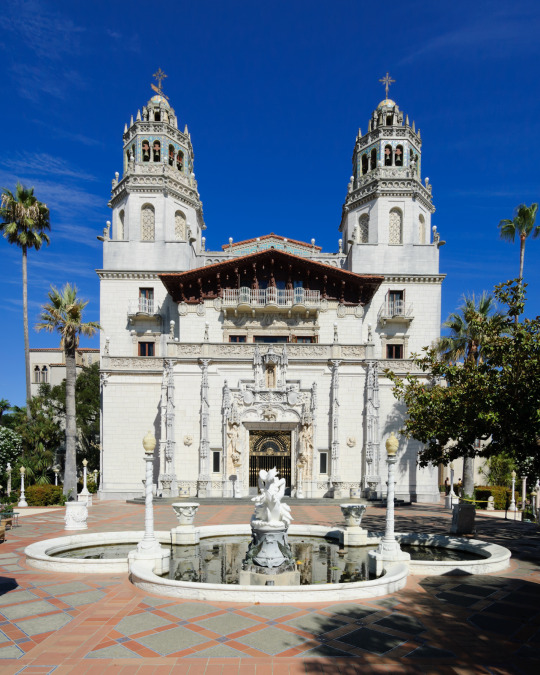
Hearst Castle| Courtesy: Wikipedia
3. Castello Di Amorosa
Napa Valley’s Castello Di Amorosa transports visitors to medieval Tuscany. This authentically styled castle features a winery within its walls, offering tours and tastings amidst its impressive architecture and scenic vineyards.
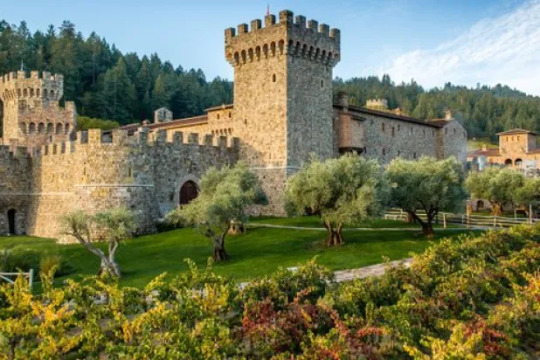
Castello di Amorosa| Courtesy: Tripadvisor
4. Cinderella Castle
An icon of fantasy and magic, Cinderella Castle is the centerpiece of Walt Disney World’s Magic Kingdom in Orlando, Florida. This fairy tale castle is beloved by visitors of all ages for its enchanting design and role in Disney storytelling.

Cinderella Castle| Courtesy: Tripadvisor
5. The Breakers
Located in Newport, Rhode Island, The Breakers is a symbol of the Gilded Age’s extravagance. This Vanderbilt mansion dazzles with its Italian Renaissance-inspired architecture, luxurious interiors, and oceanfront location.
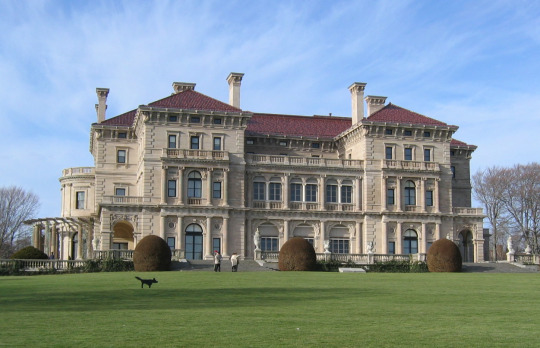
The Breakers| Courtesy: Wikipedia
6. Iolani Palace
Situated in Honolulu, Hawaii, Iolani Palace is the only royal palace in the United States. Built in the 19th century, it served as the official residence of the Hawaiian monarchy and now stands as a National Historic Landmark.
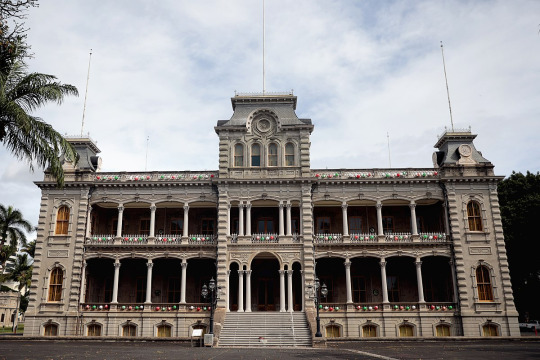
Iolani Palace| Courtesy: Wikipedia
7. Montezuma Castle
In Camp Verde, Arizona, Montezuma Castle showcases remarkable ancient cliff dwellings. Built by the Sinagua people over 600 years ago, this well-preserved structure offers insights into Native American history and architecture.
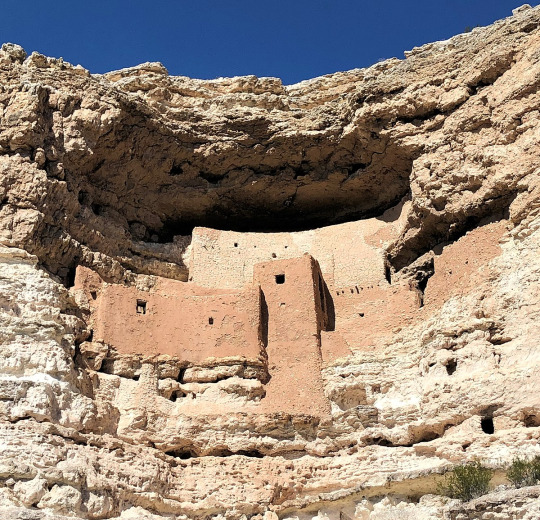
Montezuma Castle National Monument| Courtesy: Wikipedia
8. Boldt Castle
Located on Heart Island in the Thousand Islands of New York, Boldt Castle is a testament to a tragic love story. Built by George C. Boldt as a tribute to his wife, this castle features romantic gardens, intricate stone masonry, and a captivating narrative.
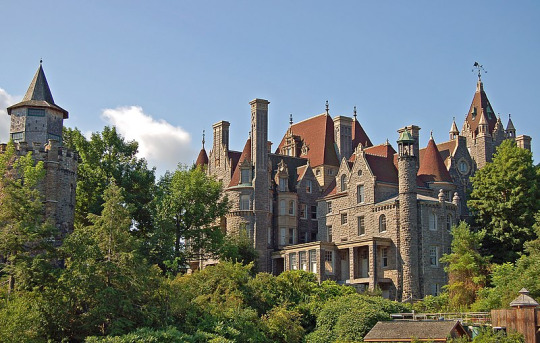
Boldt Castle| Courtesy: Wikipedia
9. Bishop Castle
A remarkable feat of one man’s vision and determination, Bishop Castle in Colorado is a unique and evolving creation. Hand-built by Jim Bishop over several decades, this castle continues to grow in size and complexity, showcasing whimsical architecture and breathtaking views.

Bishop Castle| Courtesy: Wikipedia
10. Lyndhurst Mansion
Set amidst Tarrytown, New York’s picturesque landscape, Lyndhurst Mansion is a Gothic Revival masterpiece. Designed by Alexander Jackson Davis, it boasts elaborate interiors, scenic grounds, and a rich history dating back to the Gilded Age.

Lyndhurst (mansion) – Courtesy: Wikipedia
11. Bannerman Castle
Located on Pollepel Island along the Hudson River in New York, Bannerman Castle is a striking ruin-turned-tourist attraction. Built by Francis Bannerman VI as a private arsenal, it now offers guided tours showcasing its mysterious past and stunning riverside views.
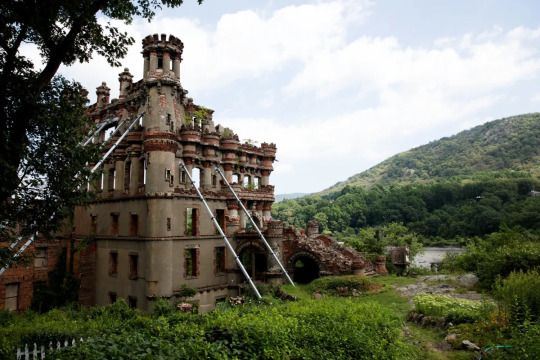
Bannerman Castle | Courtesy: The New York Times
These 11 castles represent a diverse culture of American history, architecture, and culture. Each offers a unique glimpse into different eras and styles, from medieval-inspired wineries to grand Gilded Age mansions and even a fairy tale castle straight out of Disney. Whether you’re drawn to the opulence of Hearst Castle or the rugged charm of Bishop Castle, these destinations promise unforgettable experiences for castle enthusiasts and history buffs alike. Plan your visits to these remarkable sites and immerse yourself in the enchanting world of American castles.
4 notes
·
View notes
Text
Day 7
Montezuma Valley Road to mile 115 - 15.0 miles



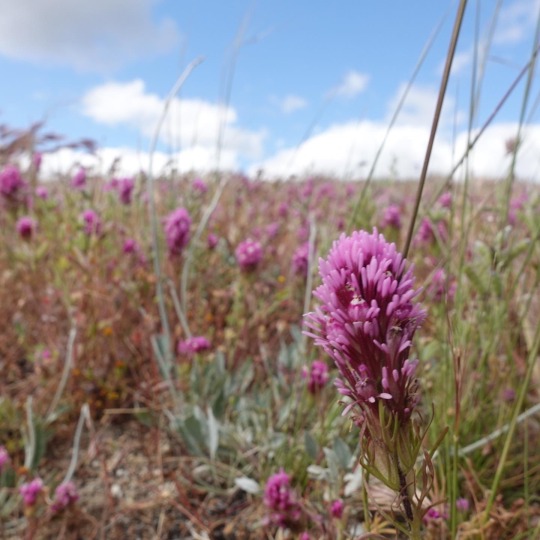
I slept a total of 10 hours last night :) I guess I’ve been missing a bed. This morning I woke up and made a huge breakfast in preparation of picking up my first resupply packages in Warner Springs.
I took that one last hot shower until Idyllwild and hitched a ride from Bill back to the trail. I felt so powerful this morning (probably because the trail was pretty flat). I walked swiftly through the fields and pastures to Eagle Rock. Can confirm the rock does indeed look like an eagle, good name!



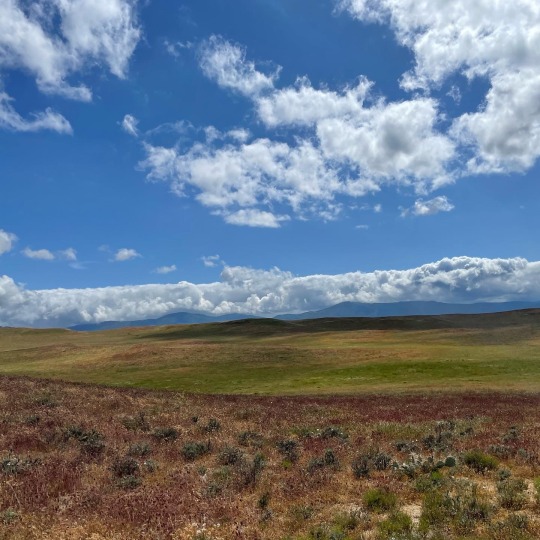
I headed into Warner Springs to pick up 2 resupply packages! One from my friend and one from @minijeng <3 I got my arcteryx jacket and prepacked snacks from my friend. @minijeng sent me a bunch of Mountain Houses, trail mix, and a tamagotchi, which is perfect for the trail :D Really so so thankful and grateful for this. I had such a rush of happiness from seeing those freeze dried meals with over 700 calories :P I had so much food, I sent my future self a resupply package 150 miles ahead at Big Bear. I also got the famous Mad Mike’s sausage dogs and they were 🔥
I hiked about 5 mile mores through a beautiful meadow just like the one in Microsoft XP. Then I setup camp and hit the bag.
Overall really good day! My knee hurts a bit but I was so happy to be back out in nature and in my tent again :D
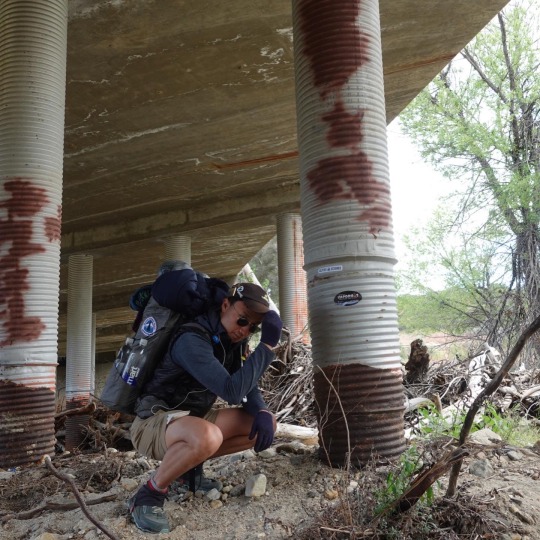
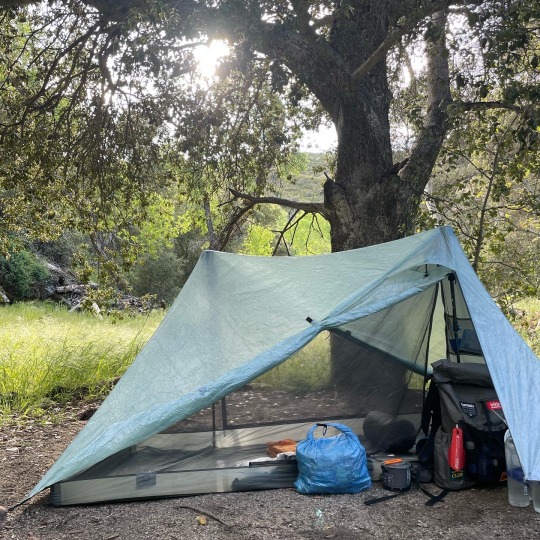
3 notes
·
View notes
Text



















The United States National Park Service was created on August 25, 1916.
National Park Service Founders Day
The National Park Service was created when President Woodrow Wilson signed the Organic Act on August 25, 1916. The anniversary of its creation is known as National Park Service Founders Day, or simply as Founders Day, and is celebrated by all national parks. They offer free admission and host special programs, both in-person and virtual. The celebration happens to take place during National Parks Month.
According to the Organic Act, "the Service thus established shall promote and regulate the use of the Federal areas known as national parks, monuments and reservations" and their "purpose is to conserve the scenery and the natural and historic objects and the wild life therein and to provide for the enjoyment of the same in such manner and by such means as will leave them unimpaired for the enjoyment of future generations." This is not too far removed from the National Park Service's current mission statement: "The National Park Service preserves unimpaired the natural and cultural resources and values of the National Park System for the enjoyment, education, and inspiration of this and future generations. The Park Service cooperates with partners to extend the benefits of natural and cultural resource conservation and outdoor recreation throughout this country and the world." The National Park Service is a bureau in the U.S. Department of the Interior. It is led by a director who is nominated by the president and confirmed by the U.S. Senate.
The first national park was Yellowstone National Park. It was established on March 1, 1872, with the Yellowstone Act, "as a public park or pleasuring-ground for the benefit and enjoyment of the people." Yellowstone was administered by the U.S. Department of the Interior, as were other early parks and some monuments, while other monuments and historical areas were administered by the War Department and the Forest Service of the Department of Agriculture. When the National Park Service was created on today's date in 1916, it managed 35 parks and monuments. With an executive order in 1933, President Franklin Roosevelt brought 56 national monuments and military sites administered by the War Department and the Forest Service into the National Park Service. This move brought areas of historical, scenic, and scientific importance together. For a new park to be created, there must be an act of Congress. But, on account of the Antiquities Act of 1906, the president can proclaim national monuments on lands under federal jurisdiction.
By the 2020s, there were over 420 national park sites, or units, in the National Park System, covering over 85 million acres of land, located in every state, in the District of Columbia, and in a number of US territories. Collectively they are referred to as parks, although there are many naming designations, such as National Battlefields, National Military Parks, and National Historic Sites. There are also "related areas"—these are not managed by the National Park Service, but "are linked in importance and purpose to places managed directly by the National Park Service by preserving important segments of the nation's natural and cultural heritage." Examples are National Heritage Areas, Affiliated Areas, and trails in the National Trails System. The National Park Service employs about 20,000 people, and has almost 300,000 volunteers! With such an expanse of land in its jurisdiction and so many people involved in the land's preservation, it's apparent that the National Park Service's original goal of conservation for future generations is still being met, and this is celebrated today with National Park Service Founders Day!
How to Observe National Park Service Founders Day
There are numerous ways you could celebrate the day:
Visit a national park or other location managed by the National Park System. Remember, there is free admission today! If you can't visit in person, you could do so virtually.
Get the NPS app.
Check out the National Park Service's "Games and Challenges."
Read a book about the national parks.
Watch National Parks: America's Best Idea and read its companion book.
Learn about the past directors of the National Park Service.
Volunteer or work for the National Park Service.
Follow the National Park Service's social media accounts.
Source
#Glacier National Park#Yellowstone National Park#Death Valley National Park#Skagway Historic District#United States National Park Service#25 August 1916#anniversary#US history#tourist attraction#original photography#USA#National Park Service Founders Day#Arches National Park#Yosemite National Park#Canyonlands National Park#Mesa Verde National Park#Colorado National Monument#Dinosaur National Monument#Petrified Forest National Park#Acadia National Park#Everglades National Park#Grand Canyon National Park#Painted Desert#White Sands National Park#Gettysburg National Military Park#Mammoth Cave National Park#Olympic National Park#Montezuma Castle National Monument
3 notes
·
View notes
Text
Discover the Top 10 Texas Destinations for 2025
✈️ Looking for the best travel deals, flights, hotels, and unforgettable adventures? Trip has everything you need to plan the perfect trip — whether it’s a weekend getaway or an international vacation.
🔥 Special Offer: Sign up now through my exclusive link and unlock amazing discounts on travel bookings! Don’t miss the chance to explore new destinations with unbeatable prices.
👉 Sign Up Here & Start Your Journey!
As 2025 gets closer, Texas is becoming a top spot for travelers. This guide shows the top 10 places to visit in Texas for 2025. You’ll find unique experiences waiting for you.
Whether you love city life, history, or nature, Texas has it all. You can explore vibrant cities or peaceful parks. This article will inspire you to see the many wonders Texas has in store for 2025.

Key Takeaways
Texas offers diverse travel experiences ranging from urban to natural wonders.
2025 is poised to be an exciting year for Texas tourism, with new attractions opening.
Top travel destinations include Austin, San Antonio, and Big Bend National Park.
The state’s rich history and vibrant culture enhance its appeal for visitors.
Outdoor enthusiasts will find an array of activities in Texas’ national parks and reserves.
Introduction to Texas Travel in 2025
Texas travel in 2025 is full of exciting opportunities. With over 268,000 square miles, it offers a wide range of experiences. This year, more people are interested in Texas’s vibrant festivals, cultural experiences, and eco-friendly tours.
Travelers will find better infrastructure that makes their trips more enjoyable. It also supports eco-tourism. Big Bend National Park and the lively cities of Texas are just a few highlights for 2025.
Landmarks like Austin’s food scene, San Antonio’s history, and New Braunfels’ water sports will attract visitors. Texas travel is set to offer unforgettable adventures and experiences for everyone.
The Allure of Texas Travel Destinations
Traveling through Texas is a journey into a world of rich culture and stunning landscapes. It’s a must-visit state with attractions for everyone. Texas offers a mix of history, natural beauty, and unique experiences.
Why Texas is a Must-Visit State
Texas is known for its vibrant culture and traditions. It has historical sites like the Alamo and modern cities. Visitors can enjoy the local food and join in on the fun.
Variety of Experiences Across the State
Texas has something for everyone, from adventure to art. Outdoor fans can explore Big Bend National Park’s plants and birds. Wine lovers will enjoy Fredericksburg’s wineries and views.
Top 10 Must-Visit Places in Texas for 2025
Traveling through Texas is a mix of city life and natural beauty. You’ll find places that offer unforgettable experiences. Whether you’re in a busy city or a quiet landscape, Texas has something special for everyone. It’s a place where adventure meets unique culture, drawing visitors from all over.
Overview of the Destinations
Big Bend National Park: This park covers over 801,000 acres. It’s known for its stunning views, like Santa Elena Canyon and Balanced Rock. It’s great for hiking and watching nature.
Space Center Houston: A top spot for space fans, it has over 400 NASA artifacts. You can see astronaut spacesuits here, making it a highlight in Texas.
Davis Mountains State Park: It’s famous for its Skyline Drive. Birdwatchers love it for spotting the Montezuma quail.
Waco Mammoth National Monument: It’s a key site for paleontology. You can see the remains of 25 mammoths, blending learning with outdoor fun.
National Cowgirl Museum and Hall of Fame in Fort Worth: This museum is huge, covering 33,000 square feet. It celebrates cowgirl culture and its role in Texas history.
World Birding Center in Rio Grande Valley: Spanning 10,000 acres, it’s home to over 500 bird species. It’s a nature lover’s dream.
National WASP WWII Museum: It’s celebrating 20 years in 2025. The museum honors the Women Airforce Service Pilots, offering a deep dive into history.
Fredericksburg: This town is getting a new hotel, the Albert Hotel, in January 2025. It’s set to become a top vacation spot in Texas.
Sweetwater: Known as the “Wind Turbine Capital of Texas,” it hosts the world’s largest rattlesnake roundup each spring. It offers a unique local experience.
Indian Lodge at Davis Mountains State Park: After renovations, it will reopen in spring 2025. It offers cozy stays in a beautiful setting.

Austin: The Live Music Capital of the World
Austin is a lively spot for music fans, known for its exciting vibe and rich culture. It has many attractions for everyone. From the Texas State Capitol to Lady Bird Lake, Austin mixes old and new beautifully.
✈️ Looking for the best travel deals, flights, hotels, and unforgettable adventures? Trip has everything you need to plan the perfect trip — whether it’s a weekend getaway or an international vacation.
🔥 Special Offer: Sign up now through my exclusive link and unlock amazing discounts on travel bookings! Don’t miss the chance to explore new destinations with unbeatable prices.
👉 Sign Up Here & Start Your Journey!
Highlights of Austin’s Attractions
Austin’s attractions are deeply rooted in its music history. With many live music spots, the city keeps audiences entertained every night. ACL Live at The Moody Theater is a top spot for concerts, hosting about 100 shows a year.
For blues and country music lovers, Antone’s Nightclub and The Continental Club are must-visits. They offer intimate shows by famous artists.
Best Activities for Visitors
There’s so much to do in Austin. Kayaking and paddleboarding on Lady Bird Lake are great outdoor activities. Shopping in SOCO and trying local food are also highlights of Austin travel.

San Antonio: A Blend of Culture and History
San Antonio is a city full of history and culture. It has many attractions that show its past. This makes it a great place for those who want to learn and have fun.
New things are coming, like a UNESCO World Heritage Center in 2025. This will make learning about San Antonio’s history even more exciting. Places like the Alamo and the San Antonio Missions are key to understanding Texas’s heritage.
✈️ Looking for the best travel deals, flights, hotels, and unforgettable adventures? Trip has everything you need to plan the perfect trip — whether it’s a weekend getaway or an international vacation.
🔥 Special Offer: Sign up now through my exclusive link and unlock amazing discounts on travel bookings! Don’t miss the chance to explore new destinations with unbeatable prices.
👉 Sign Up Here & Start Your Journey!
Top Historical Sites to Visit
Some of the top historical sites in San Antonio are:
The Alamo, a symbol of Texas freedom and resilience
The San Antonio Missions National Historical Park, a UNESCO World Heritage Site
The historic Market Square, highlighting the city’s Mexican culture
The Spanish Governor’s Palace, a glimpse into 18th-century life
Villa Finale, showcasing Victorian architecture and history
Cultural Experiences in San Antonio
San Antonio offers a wide range of cultural experiences. The River Walk is lively, with dining, shopping, and entertainment. Festivals like Fiesta celebrate the city’s diverse culture.
Places like Mexico City by Chef Jason Dady offer unique dining experiences. The San Pedro Creek Culture Park is a big investment in public art and outdoor activities. It adds to the city’s cultural richness.

Fort Worth: Embrace the Cowboy Spirit
Fort Worth is the heart of cowboy culture in Texas. Visitors can dive into the rich heritage that shaped the region. The Stockyards National Historic District is a prime example, with twice-daily cattle drives. These drives attract over nine million visitors each year, making Fort Worth a top spot for cowboy experiences.
The Chisholm Trail, a historical route, made Fort Worth key for ranchers and cowboys in the 19th century. In 1865, Texas had nearly five million wild Longhorn cattle. By the mid-1950s, Fort Worth became one of the biggest livestock-trading centers in the U.S.
Today, Fort Worth offers history and modern fun. The Stockyards is getting a $500 million makeover, adding a luxury hotel and live music venue. Food lovers should try Goldee’s Barbecue and Joe T. Garcia’s for authentic Texan tastes.
Art fans will love the Kimbell Art Museum, with works by Michelangelo and Picasso. The Texas Cowboy Hall of Fame celebrates Western heritage, with new members inducted each year. The 2025 ceremony is set for March 27.

New Braunfels: Adventure by the Water
New Braunfels is a paradise for outdoor lovers. It has beautiful rivers that offer a variety of experiences. Families and adventurers can enjoy the Comal and Guadalupe Rivers, famous for tubing in Texas.
✈️ Looking for the best travel deals, flights, hotels, and unforgettable adventures? Trip has everything you need to plan the perfect trip — whether it’s a weekend getaway or an international vacation.
🔥 Special Offer: Sign up now through my exclusive link and unlock amazing discounts on travel bookings! Don’t miss the chance to explore new destinations with unbeatable prices.
👉 Sign Up Here & Start Your Journey!
Popular Water Activities
Visitors in New Braunfels can try many water activities. You can tube down the rivers or kayak at your own pace. Some top activities include:
Tubing on the Guadalupe River, known for both thrilling rapids and lazy stretches for relaxation.
Kayaking along the scenic Comal River, perfect for nature lovers looking to paddle through lush landscapes.
Rafting adventures that cater to groups looking for a more collaborative experience on the water.
The area is also home to Schlitterbahn Waterpark, known as the world’s best waterpark. It has over 51 attractions, including slides and wave pools. Families will find endless fun here. The Wetlands Walkway is also a great spot for bird watching, with over 240 recorded species.
New Braunfels offers a mix of culture, history, and water activities. It’s a place where everyone can find adventure. Exploring the rivers gives a glimpse into Texas’s outdoor beauty.
Fredericksburg: Wine Country and German Heritage
Fredericksburg is a top spot in Texas wine country, known for its German roots and beautiful views. It welcomes about 1.5 million visitors each year. They come for the wineries and cultural sights. With over 50 wineries, Fredericksburg is a big player in Texas wine tourism.
It’s the fifth biggest wine producer in the U.S., making over 4 million gallons yearly.
Must-Visit Wineries
Exploring Fredericksburg means checking out its wineries. You’ll find everything from small boutiques to big names. Each offers unique wines and tasting experiences. Wine tastings cost between $15 and $25 per person.
This supports local businesses. Here are some wineries you should see:
Becker Vineyard: It’s known for its beautiful grounds and Lavender Festival. It’s great for families and wine lovers.
Grape Creek Vineyards: This place feels like Tuscany. It offers a fancy tasting experience in a beautiful setting.
Pedernales Cellars: It’s famous for its views and top-notch wines. They specialize in Tempranillo and Viognier.
While enjoying the wine scene, check out Main Street. It has over 150 shops and galleries. It’s perfect for wine fans, foodies, and history buffs. Every visit is filled with new discoveries in Texas wine country.
Big Bend National Park: Nature’s Masterpiece
Big Bend National Park is a stunning mix of mountains, deserts, and canyons. It covers 801,163 acres. This place is perfect for outdoor fun, with activities for everyone.
Hikers and bikers will love the park’s diverse landscapes. It’s home to over 1,200 plant and 400 bird species. This makes it a great spot for wildlife watching.
Outdoor Activities for Nature Lovers
The park’s beauty is just the start. It has over 100 miles of paved roads and a 30-mile scenic drive. These paths invite you to explore.
The South Rim Loop is a thrilling 12 to 14-mile journey. Families will enjoy the 4.8-mile Lost Mine Trail. The Santa Elena Canyon Trail is a must-see, with cliffs over 1,500 feet high.
There’s more than just hiking. ATV rides and Rio Grande hikes offer unique experiences. Big Bend is a place where memories are made.
Experience the Night Sky
At night, Big Bend becomes a top spot for stargazing in Texas. The dark skies let you see the Milky Way and more. It’s a dream for stargazers.
After sunset, head out to see the stars. Big Bend is beautiful by day and night. It’s a place that will leave you in awe.
FAQ
What are the top travel destinations in Texas for 2025?
Top spots in Texas for 2025 include Austin, San Antonio, and Fort Worth. New Braunfels, Fredericksburg, and Big Bend National Park are also highlights. Each place offers a mix of culture, adventure, and natural beauty, making Texas a top travel spot.
Why should I visit Texas in 2025?
Texas in 2025 is buzzing with vibrant festivals and improved travel options. It’s perfect for those who love adventure and culture. The state’s diverse landscapes and rich history offer endless exploration opportunities.
What activities can I enjoy in Austin?
Austin is alive with music, history, and outdoor fun. You can enjoy live music, explore the Texas State Capitol, and kayak on Lady Bird Lake. Don’t miss the food scene in the eclectic SOCO district.
What attractions can I visit in San Antonio?
San Antonio is home to the historic Alamo and the scenic River Walk. The San Antonio Missions are a UNESCO World Heritage site. The city’s vibrant culture, like the Fiesta festival, adds to its charm.
What makes Fort Worth unique as a travel destination?
Fort Worth is known for its cowboy heritage, seen in the Stockyards National Historic District. You can watch live cattle drives. The city also offers modern art at the Kimbell Art Museum and cultural festivals.
What are the best outdoor activities in New Braunfels?
New Braunfels is great for tubing, kayaking, and rafting on the Comal and Guadalupe Rivers. It’s also known for its local culture, historic downtown, and family-friendly spots like Schlitterbahn Waterpark.
Why is Fredericksburg a must-visit for wine lovers?
Fredericksburg is famous for its wine country. It has many wineries for tastings and tours. The charming Main Street is perfect for shopping and art, making it a great place for wine lovers and those looking to relax.
What outdoor experiences await in Big Bend National Park?
Big Bend National Park offers stunning landscapes for hiking, biking, and stargazing. It’s a remote paradise for nature lovers. You can also climb mountains and explore scenic trails.
✈️ Looking for the best travel deals, flights, hotels, and unforgettable adventures? Trip has everything you need to plan the perfect trip — whether it’s a weekend getaway or an international vacation.
🔥 Special Offer: Sign up now through my exclusive link and unlock amazing discounts on travel bookings! Don’t miss the chance to explore new destinations with unbeatable prices.
👉 Sign Up Here & Start Your Journey!
#trending#seo agency#search engine optimization#seo company#seo marketing#travel blog#travel#google ads#seo services#tourism#Tripcom 🌎#TravelDeals ✈️#TravelWithTripcom 🏝️#BestTravelDeals 💰#TravelMoreSpendLess 🌟#TravelBooking 🏨#CheapFlights ✈️#HotelDeals 🏡#VacationVibes 🌞#TravelTheWorld 🌍#Wanderlust ❤️#TravelSmart 💡#ExploreMore 🚀#BookNowTravelSoon ⏳#TripcomDeals 💥#AdventureAwaits 🌲
1 note
·
View note
Note
I didn’t know there were different species of quail?! I thought all males had the silly (cute) forehead feather. If you want to tell us all about quail, I would love to hear, but I also possess the Googles. Anyway, your birds make me smile. Thank you for posting about them.
oh there's like a million species lol I don't know much about any of them, just names and I can recognize a lot of them. I raised Bobwhite quail (my favorites) for wild local release since they're native to michigan.

I'm raising Celadon quail now, which are coturnix with the celadon (Ce) gene, which strips their eggs of the splotchy bloom coating, leaving them blue.
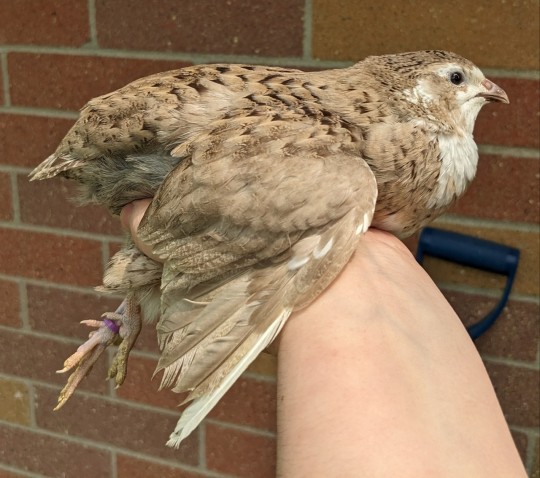
Here's what the wild type looks like:
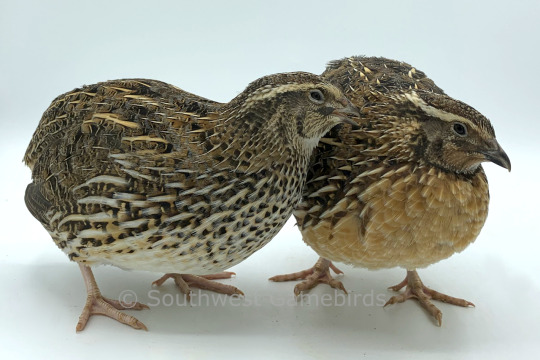
There's a species of coturnix called a rain quail:
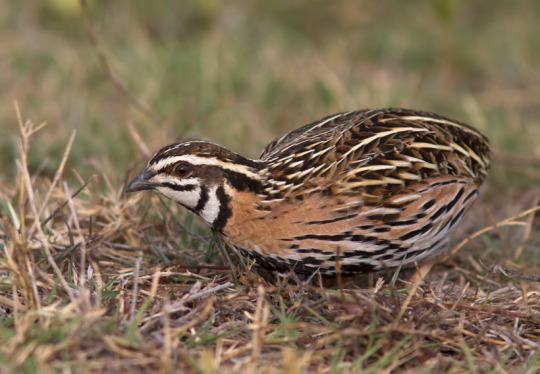
The ones with the little head doot you're PROBABLY thinking of are valley quail (California quail, I think they're also called?).

And the really similar Gambel's quail:
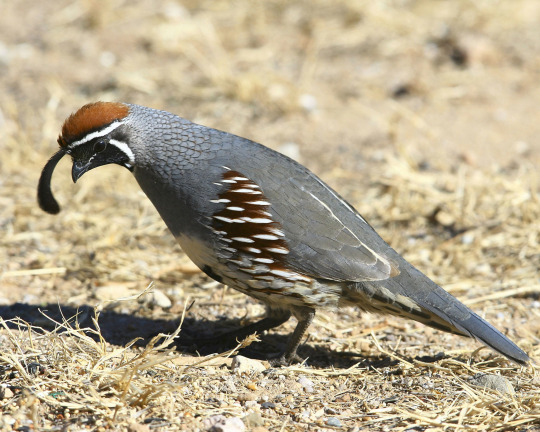
There's button quail

blue scaled quail which have a crest, not a doot

Montezuma quail which honestly may be a very big hoax I mean look at these fuckers:

Which are different somehow than the ocellated quail which are just as ridiculous:

Mountain quail which couldn't decide if it wanted a crest or a doot I guess:

the elegant quail:
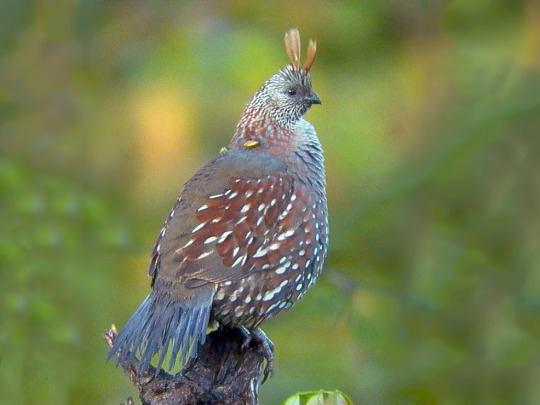
there's a bunch more too, but. yeah quail come in all sorts of Shapes and colors. they're neat little birds. I think the bobwhites, valley, gambel's, scaled, mountain, and uhhhh montezuma quails? are native to the US, but not all of them are in every state.
842 notes
·
View notes
Text
Santa Ana Costa Rica: A Vibrant Hub in the Central Valley
Santa Ana Costa Rica! It's a quaint town in the province of San José. It is a well-liked destination for both locals and foreigners due to its pleasant climate, beautiful surroundings, and contemporary conveniences. It's the ideal location for unwinding, exploring, and taking advantage of everything this dynamic nation has to offer. Let me explain everything to you!

Best Time to Visit Santa Ana
The dry season, from December to April, is generally considered the best time to visit Santa Ana. You’ll experience sunny skies, less rainfall, and ideal conditions for outdoor activities. However, this is also the peak tourist season, so expect higher prices and larger crowds.
The rainy season, 1 from May to November, brings lush greenery and lower prices, but you may encounter occasional showers.
How to Reach Santa Ana
By Air: The nearest international airport is Juan Santamaría International Airport (SJO), located in Alajuela, about a 20-minute drive from Santa Ana.
By Bus: Frequent and affordable bus services connect Santa Ana to major cities throughout Costa Rica.
By Car: Renting a car provides flexibility to explore the surrounding areas at your own pace.
Things to do in Santa Ana Costa Rica:
Explore the City Center: Wander through the charming streets of Santa Ana, admiring the colonial architecture and vibrant street art. Visit the Central Park, a popular gathering spot for locals and tourists.
Visit the Poás Volcano National Park: This active volcano offers breathtaking views and unique geothermal features.
Hike in the Doka Coffee Estate: Explore the lush coffee plantations and learn about the coffee-making process from bean to cup.
Visit the La Paz Waterfall Gardens: Discover a stunning array of waterfalls, observe wildlife, and enjoy the beautiful gardens.
Go Whitewater Rafting: Experience the thrill of whitewater rafting on the Pacuare River, known for its challenging rapids and stunning scenery.
Visit the Precolumbian Gold Museum: Explore a fascinating collection of pre-Columbian gold artifacts.
Enjoy the Local Cuisine: Savor delicious Costa Rican dishes at local restaurants and cafes. Try traditional dishes like gallo pinto, casado, and tamales.
Experience the Nightlife: Enjoy live music, dancing, and drinks at the many bars and clubs in Santa Ana.
Read More:
Waterfalls in Costa Rica
Ojochal Costa Rica
Montezuma Waterfalls
Llanos De Cortez Waterfall
La Leona Waterfall
Oropendola Waterfall
Best Area To Stay In Costa Rica
Nearest Tourist Places:
Alajuela: The capital of the Alajuela Province, offering a glimpse into local life and a vibrant market.
Heredia: A charming city known for its colonial architecture and the University of Costa Rica.
San Ramón: A peaceful town nestled in the mountains, offering stunning views and opportunities for hiking.
Volcán Barva: An active volcano with hiking trails offering panoramic views of the Central Valley.
Sarchi: Famous for its colorful oxcarts and vibrant handicrafts.

Shopping in Santa Ana Costa Rica:
Local Markets: Explore the bustling local markets for fresh produce, handicrafts, and souvenirs.
Boutiques and Shops: Discover unique clothing, jewelry, and art at the many boutiques and shops in the city center.
Supermarkets: Stock up on groceries and essentials at local supermarkets.
Where to Stay Near Santa Ana:
Hotels: A wide range of hotels, from budget-friendly options to luxurious resorts, are available in Santa Ana and surrounding areas.
Vacation Rentals: Consider renting a condo, apartment, or house for a more comfortable and homey experience.
Eco-lodges: Experience sustainable living and immerse yourself in nature at nearby eco-lodges.
Santa Ana offers a unique blend of urban convenience and natural beauty. Whether you’re seeking adventure, cultural immersion, or simply a relaxing getaway, this vibrant city has something to offer everyone. Continue Reading
Here are some FAQs about Santa Ana Costa Rica:
Q: What is Santa Ana Costa Rica known for?
A: Santa Ana is known for its vibrant expat community, proximity to volcanoes and natural attractions, and its growing infrastructure.
Q: When is the best time to visit Santa Ana?
A: The dry season (December to April) offers the best weather.
Q: How can I get to Santa Ana?
A: Fly into Juan Santamaría International Airport (SJO) and then travel by car, bus, or taxi.
Q: What are some popular things to do in Santa Ana?
A: Visit Poás Volcano National Park, hike in the Doka Coffee Estate, go whitewater rafting, and explore the city center.
Q: Is shopping available in Santa Ana?
A: Yes, you can find local markets, boutiques, and supermarkets.
Q: What type of accommodation options are available?
A: Hotels, vacation rentals, and eco-lodges are available in Santa Ana and the surrounding areas.
Q: Is Santa Ana a good place for expats?
A: Yes, Santa Ana has a large expat community and offers a good quality of life.
#SantaanacostaRica#Santaanacostaricahotels#Santaanacostaricamap#Santaanacostaricalocation#ItineraryPlans
0 notes
Text
Fun Things to Do in AZ: Exploring the Best of Arizona
Marvel at Natural Wonders
No trip to Arizona is complete without witnessing its natural beauty. The Grand Canyon, one of the Seven Natural Wonders of the World, should top your list. Enjoy hiking, mule rides, or simply taking in the awe-inspiring views.
For a more off-the-beaten-path adventure, explore Antelope Canyon in Page, known for its surreal, otherworldly sandstone formations. The Horseshoe Bend, located nearby, offers a breathtaking panoramic view of the Colorado River.
Get Adventurous Outdoors
Arizona’s diverse terrains make it an adventure lover’s paradise. Head to Sedona for hiking trails surrounded by red rock formations and energy vortexes. Or, try mountain biking through the rugged trails of Flagstaff. If water activities are more your style, Lake Powell offers kayaking, paddleboarding, and houseboat rentals.
The vast Sonoran Desert provides a unique backdrop for hot air balloon rides, ATV tours, and guided horseback rides. Each experience guarantees stunning desert vistas and unforgettable memories.
Immerse Yourself in History and Culture
For history enthusiasts, visiting ancient sites like Montezuma Castle or Tuzigoot National Monument will transport you back in time. The Heard Museum in Phoenix is another must-see, showcasing Native American art and culture in a captivating setting.
Don’t miss Tombstone, the "Town Too Tough to Die," where you can witness reenactments of the Wild West and learn about Arizona’s rich frontier history.
Savor Arizona's Urban Delights
If you’re craving urban Fun Things to Do in Az, Phoenix and Tucson deliver in spades. Old Town Scottsdale is a hub for art galleries, boutique shopping, and trendy restaurants. Food lovers can also explore the growing culinary scene, with an emphasis on Southwestern flavors.
Phoenix, AZ’s bustling capital, is brimming with entertainment options. Sports fans can catch a game at Chase Field, while families might enjoy the interactive exhibits at the Arizona Science Center.
Relax in Arizona’s Resorts and Spas
For those seeking relaxation, Arizona is home to world-class resorts and spas. The Miraval Resort & Spa and Sanctuary Camelback Mountain offer luxurious settings to unwind and rejuvenate. Pair a spa day with yoga classes or meditation sessions, all set against serene desert landscape
Fun Things to Do in AZ for Families
Families traveling to Arizona will find plenty of kid-friendly attractions. Visit Butterfly Wonderland in Scottsdale, Things to Do in Arizona where children can walk among thousands of fluttering butterflies. The Phoenix Zoo and Arizona-Sonora Desert Museum in Tucson provide educational and entertaining experiences for all ages.
Seasonal Activities to Check Out
Arizona’s climate allows for year-round activities, but certain seasons offer special highlights. During winter, head to Snowbowl in Flagstaff for skiing and snowboarding. In spring, the Cactus League Spring Training brings baseball fans together to watch MLB teams prepare for the season.
During the summer months, beat the heat by heading to higher elevations like Prescott or Mount Lemmon. The fall season is perfect for exploring Arizona's wineries, particularly those in the Verde Valley region.
0 notes
Text
2025 IHSAA District Assignments Released
2025 IHSAA District Assignments Released #IAhswr
DISTRICT TOURNAMENTS: 10 a.m., Saturday, Feb. 15, 2025 Tickets: $8 via HomeTown Ticketing CLASS 1A DISTRICT #1: COLFAX-MINGO Baxter Belle Plaine Colfax-Mingo HLV Jesup Lisbon Lynnville-Sully Montezuma Moravia Pekin DISTRICT #2: DENVER Central, Elkader Columbus Catholic Denver East Buchanan Hudson Newman Catholic North Linn South Winneshiek Starmont Wapsie Valley DISTRICT #3: EMMETSBURG East…
0 notes
Text
Best of Sedona Arizona
In this episode, the FAQ is: How can I travel solo while in a “group”?
Today’s Destination is: Sedona, AZ
Today’s Mistake- I bought the wrong ticket online
Travel Advice: Gas up when half full.
FAQ: How can I travel solo while still in a “group”?
Answer: Before or after your group trip, plan some solo time, for just you. That way, when you do get to the arranged activities, you will be ready and prepared. Some people like to warm up by going with just one friend, before they join the group. That’s ok, too.
After your group tour, you may want to spend a few days in the same region to explore other options and see things that were left off the tour. Tourguides generally only show you the best parts of the region. To really experience it, you need some solo trip time, too.
Today’s destination: Sedona, Arizona
Sedona, Arizona, and the Verde Valley area are 1200 square miles big and are a traveler’s delight. It’s like an oasis in the desert, but lifelike and real. It’s known for spirituality, wellness, and red rocks.
Sedona’s magic goes back to history and legend. It may have been linked to early Aztec or Mayan occupation thousands of years ago. The earliest native artifacts—such as pottery and weavings—found in the area date back to as early as the 7th century. Later, tribes were present, including the Hopi, Navajo, and (YA—VA Pie) Yavapai.
Cliff houses are worth exploring such as Sedona’s (pal at kI) Palatki Heritage Site or nearby Montezuma Castle. Way back in the 16th century, the Spanish called the local in-dig in us) Indigenous people Sinagua, which means without water. Sedona is named after the wife of TC Schnebly, the founder in modern days of the area.
https://visitsedona.com/
Today’s Mistake- I bought the wrong ticket online.
Today’s Travel Advice-Gas up when half full
Check the gas gauge when you get in the car. Make sure you have enough. It’s best to fill up early in the day if you can. I try to fill up whenever I am halfway full.
Gas prices have been dropping lately. Use the GasBuddy app or similar method of finding the cheapest gas in your neigbhorhood.
Connect with Dr Travelbest
Drmarytravelbest.com
Dr. Mary Travelbest Twitter
Dr. Mary Travelbest Facebook Page
Dr. Mary Travelbest Facebook Group
Dr. Mary Travelbest Instagram
email: [email protected]
Dr. Mary Travelbest Podcast
Dr. Travelbest on TikTok
Dr.Travelbest onYouTube
Check out this Dr Travelbest episode!
0 notes
